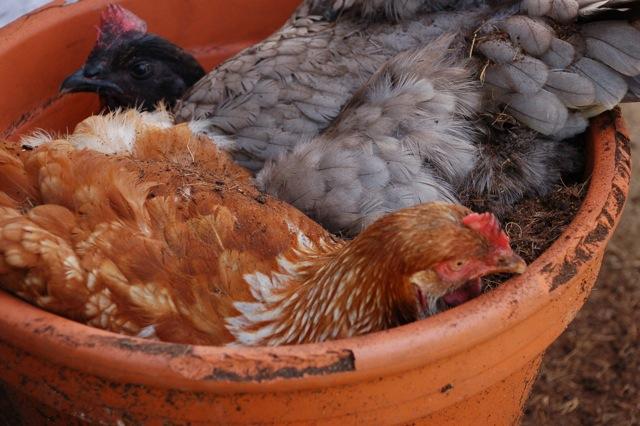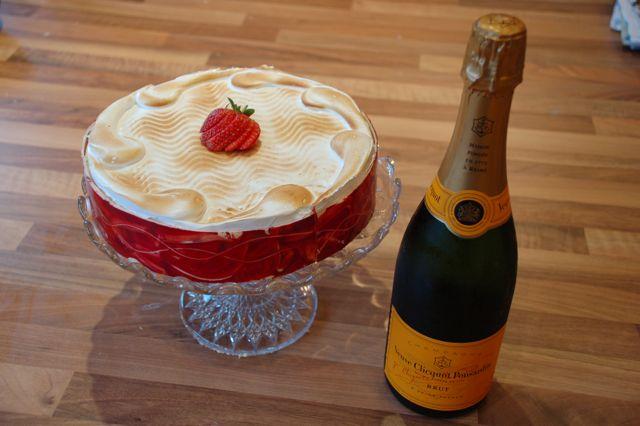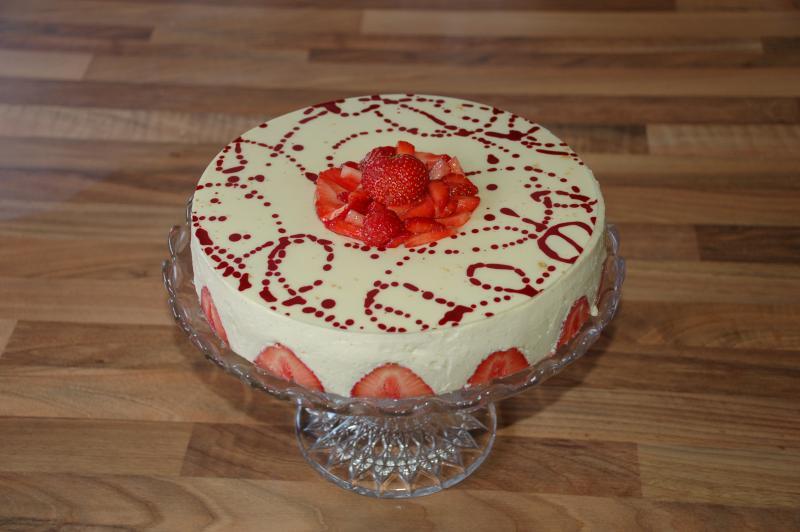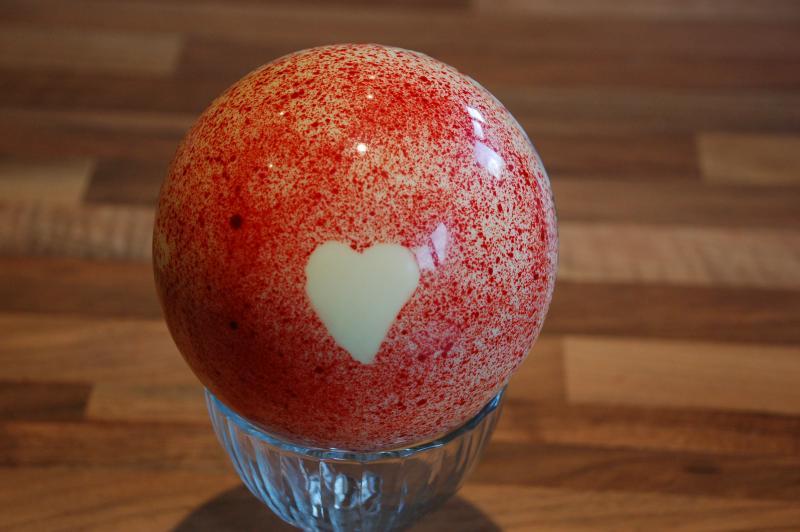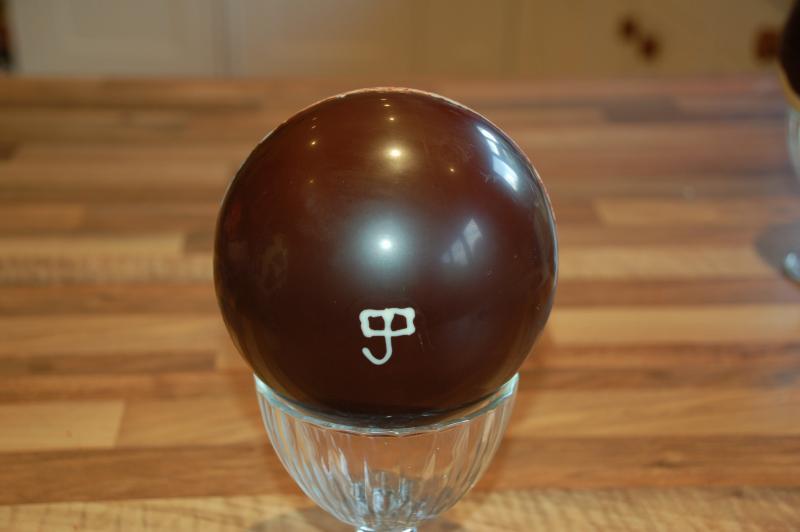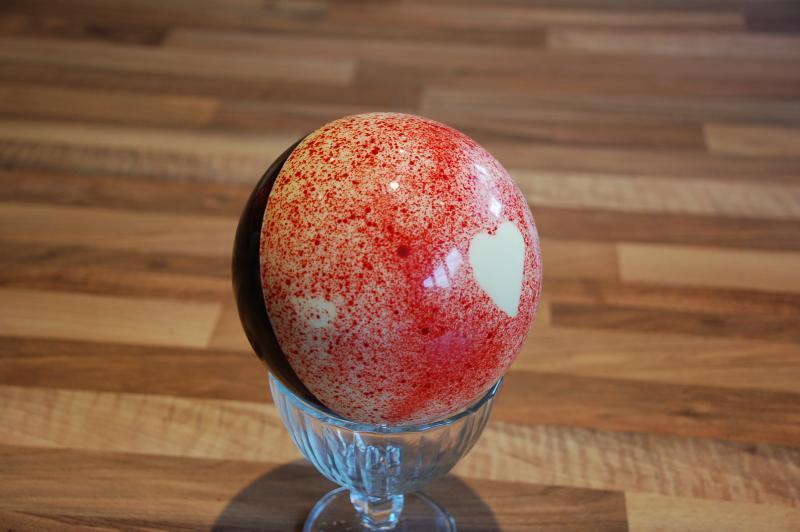-
Posts
139 -
Joined
-
Last visited
Content Type
Profiles
Forums
Store
Help Articles
Everything posted by RichardJones
-
PS Please could you post the links to the blogs you mentioned? I'd like to have a browse. Thanks.
-
Hello, jadoreparis. I trained at the INBP (the national pastry/baking institute: www.inbp.fr). I can try and answer questions on that should you like. The CAP course (c.5 months) is a very thorough grounding in classic French patisserie. No dessert work - this is pastry-shop focussed. I learnt a great deal and really enjoyed myself. Nothing fancy - a nice business-like approach. All teaching in French only. Very reasonably priced. Ferrandi has a great rep and their basic CAP course will be broadly similar but with more frils, I imagine. They charge silly money for foreigners, though, which is why I chose INBP. I know Americans have a rather different idea to Brits when it comes to reasonable amounts to spend on culinary training! Lenôtre also has an A* rep and made the best pain au chocolat I've ever tasted. I only know people who have done their short courses but I imagine their Master Class programme would be really very good. But does one really need to spend €25,000+ for half a year of lessons?
-
I have tried a little search but without much success. Does anyone here have any experience with par-boiling pasta in large quantities to be able to serve portions quickly à la minute? I don't know where to begin with this technique but would like to find out more. How long is the initial cooking? How do you store the pasta in the par-cooked state? What is the best way to approach the final cooking? and so on. Any experiences appreciated. Thanks, Richard
-
Thanks for the comments. I must admit I was pleased with how it came out - very frustrating to have to give it away and not get a proper taste. (Had a mini one I made with the scraps). Darienne - no, the décor was after demoulding. Genkinaonna - with pleasure. For the mousse: 450g strawberry purée (I also added some lemon juice and crème de fraise to enhance the flavour) 4 leaves of gelatin 140g Italian meringue 170ml cream For the dacquoise: 150g icing sugar 150g chopped hazelnuts (carefully blended to coarse powder - I actually used 30g of ground almonds to make up the full weight and it worked well) 5 egg whites 50g caster sugar Do you know what to do from there or would you like a quick step-by-step? R
-
Here's what I made yesterday: strawberry mousse layered with a hazelnut dacquoise (soaked in lychee syrup). The left over strawberry purée and syrup went on the top. I am pleased to say all the colours are completely natural. PS For those interested in techniques, I put this one together upside down and it really worked to get a perfectly flat top and crisp edges.
-
Looks super - especially the plain hemispheres. I dropped my marble slab and it smashed. This reminds me to get a new one.
-

Chocolates with that showroom finish, 2004 - 2011
RichardJones replied to a topic in Pastry & Baking
It might be a temper issue and it might be that your white chocolate was not warm enough. Another possibility, inversely, is that the cocoa butter was too cold. Once your tempered CB has crystalized why not try warming it slightly with a heat gun or hairdryer to bring it up in temperature slightly. I used to have the problem you describe but have not since using this idea. Of course, need to be careful not to take it too hot. If you try it, let us know if it works for you! R -
Thanks, Kerry. Lapin d'Or, she's a hybrid: Rhode Island Red crossed with a Cuckoo Maran. She happens to come from France, too...
-
Has no one been cooking? Here's a little dessert: a sabayon based chocolate mousse with raspberries, greek yoghurt and honey (rather thrown on the plate). And here are the egg layers in their favourite pot:
-
>In general, recipes which produce any sort of "tart" benefit from blind baking. I'd respectfully disagree with this - although it does depend on what kind of tarts we're discussing. As far as the most common tarts you find in French patisseries go, they are nearly all baked in one go - I'm thinking all manner of amandine style tarts (ie tarts using crème d'amandes and eg pear, apricot, even cherry) and also any baked fruit tart (especially apple tarts). Perhaps it is because these can all be baked at once that makes them so popular. One major exception is the lemon tart but the kind of lemon tart I see most often uses a lemon cream cooked in a pan so no re-baking is required - again, this saves the hassle of double baking so burning isn't a worry. But as Paul Stanley says, the best plan is to blind bake the case when the filling needs to be cooked at a lower temperature (eg baked lemon, chocolate tarts, quiches &c). If the oven is set to below about 160 Celsius the pastry should not brown much further (at least, not in a rush) so you have a temperature at which egg based fillings will set without upsetting the case. Richard
-
I tried this to use up some Callebaut white my supplier sent by mistake (I hate it). Unfortunately caramelizing it did not improve it! I might try again with a different brand...
-
I don't know this particular recipe but the marshmallow recipes I know use glucose. Glucose isn't very sweet so you may have to adjust a little but it shares some key properties with invert sugar which are useful for marshmallows (eg preventing crystallization)...
-
Coulant means 'flowing' so you can see why it's called that. Since fondant also makes sense I don't think this is a case of Chinese whispers.
-
Thanks for the link, Fanny, I'll be in touch with them. Yes, I suppose pectine jaune would be fine, too. My recipes are adapted for NH, though...
-
Thanks, Kim! The mistake with my last attempt at an Eton Mess entremets was that the meringue disks gradually dissolved into the cream. Pretty obvious when you think about it, but I didn't - we'd only used meringue disks in frozen entrements at school, and I disengaged my brain. So here is attempt two. I made tiny French meringue drops, dried them and dipped them in white chocolate to seal out the moisture. The décor on top is Italian meringue. The décor on the side is white chocolate with red CB. Unfortunately my sister came and fiddled with the ring of white chocolate and it cracked. Inside is a vanilla bavaroise, the dipped meringues, a disk of raspberry jelly and diced strawberries.
-
Just a few thoughts based on my time in France/with French. As mentioned fondant comes from the French fondre, to melt. Its use maps on to patisserie in different ways, though. It is clear how the liquid-centre sponges acquired the name fondant because the middle appears to be molten (and really is, if you've used a ganache). But fondant also applies to texture, notably a melt in the mouth type texture. You might contrast fondant with croustillant which means a bit of a bite or crunch. In fact, as luck would have it, I have a clip of the chef pâtissier at Ladurée using both words to describe a macaron: At 1.29 you hear him describe the shell as croustillant and the cream filling as fondante at 1.32. Again, at 1.35, he uses fondant to describe the interior texture of the shell. Later in the clip there is an interview with Hermé. It's a little disappointing as far as interviews with heros go - but I'm happy to translate it if anyone would like to read what he says (including describing the macaron as fondant at 5.03!). Hopefully that makes a little more sense now - it is easy to imagine how a flourless cake, for instance, may be seen as sufficiently fondant to merit that as a name in itself.
-
Dear eGulleteers, I was hoping to lay hands on some Pectin NH (or is it NH Pectin in English?) to rustle up some pâtes de fruits. Does anyone know where to get hold of it in reasonable (i.e. not humongous) quantities, please? Thanks, Richard (PS I did try Googling but either my skills are not up to scratch or there isn't any or what the French call pectine NH masquerades under a different name over here...)
-
A quick thought: pectin gives quite a short texture but gelatin a chewier one. So you might like to try adding some.
-
I have been a little baffled. Grapes might be my favourite fruit. They have a lovely texture and a subtle flavour. But I have never seen a single patisserie recipe which uses grapes. Is it just because the flavour is not strong enough to carry in the presence of other ingredients? Any thoughts?
-
Here is an entremets based on two classic English desserts. The first is Eton Mess, a haphazard mix of broken meringue, strawberries and cream. I thought it would be fun to try a formal version of this dessert which is normally thrown together. I was also reminded of the dessert served after Encaenia, the honorary degrees ceremony at Oxford University. After the ceremony, an ancient benefaction provides peaches and champagne for all present. So this is, from the bottom up: a layer of dried French meringue, a layer of a strawberry liqueur flavoured crème allégée (crème pâtissière lightened with whipped cream and set with gelatin), diced strawberries, another disk of meringue, a thin disk of peach jelly, more of the cream and a white chocolate and red CB garnish.
-
Sorry to dig up an old thread but it appeared when I was googling for info on Caramanfruit. I've recently got hold of some but have not yet used them. I just wanted to say in response to this that there are no preservatives in the Caramanfruit shelf-stable products, just added sugar. That might be of interest to someone!
-
I imagine between us we can come up with several reasons why the chocolate is better partially melted. The thing that springs to my mind straight away is that it means less heat will be lost from the cream in melting the chocolate, so the temperature will remain higher longer. As he mentions, keeping the emulsion above 35 degrees is important. [Re friction, probably best to keep this aside to the primary discussion, are you French/what is your experience with French? In English, I would say for me, an important connotation of friction is two bodies sliding past each other... car tires on roads, ping pong balls on bats and so on. In French, the primary connotation seems to be one of vigorous backwards and forwards agitation (eg rubbing a part of the body vigorously for medicinal or other reasons). That sense of vigorous agitation is rather analagous to what Bau is doing to create his emulsion. In this sense, remuer is not quite right. JMHO.]
-
I must admit I feel rather ambivalent about this video. I respect Bau a lot, having read Au coeur des saveurs which I thought was terrific and superbly interesting (indeed, nearly added him to that other active thread about great patissiers). His technical insights were particularly gripping with respect to things it might be easy to take for granted like whipping cream, for instance. This is why I am biased in favour of this ganache clip. The clip itself, though, is rather odd. In the technical part he explains the principle of emulsifiers in great detail but then does not refer to them for the rest of the clip nor do they form part of his final list of secrets for creating a good ganache. After he'd gone to such length to explain about them I imagined he was going to go on to say the secret to his perfect ganache was to augment the lecithin or something, but this never came and the science was forgotten. Moreover, despite this pseudo-technical approach he never explains the steps he takes. Why should the chocolate by partially melted, for example? (Certainly, we can fill in the gaps, but the point is he does not himself explain and, besides, a whole host of other patissiers will say this step is unnecessary so he does really need to justify it!) Nor does he ever offer a proper scientific explanation for the addition of cream in multiple steps. I certainly agree with Darienne; in fact, I would defy Bau to identify between three ganaches made in the three ways he shows if all are finished off using the handheld blender and all other factors (ratios, temperature &c.) are the same. Dougal, I think the friction point is slightly lost in translation because the word is used with a slightly different nuance in French but there is no better way to translate it as succinctly into English. As you say, I think we would sooner say vigorous/intense mixing.
-
Here's a sphere I made for someone special. The decorative part was done with a toothbrush and the heart 'erased' with a cotton bud.
-
If we're talking ever, I suppose Carême and Chiboust would need to go in? And a modern list wouldn't be complete without Hermé and Lenôtre (most French pâtissiers would agree, I'm sure).




